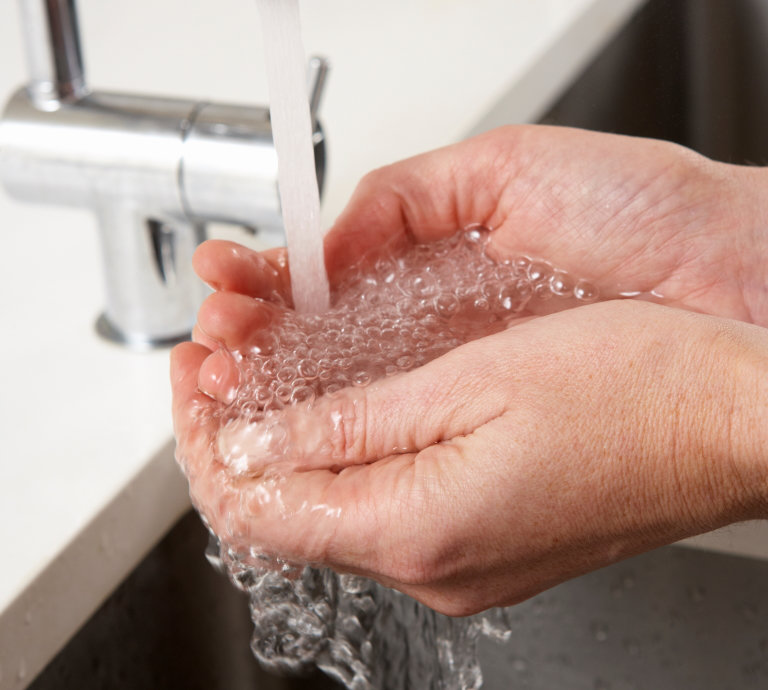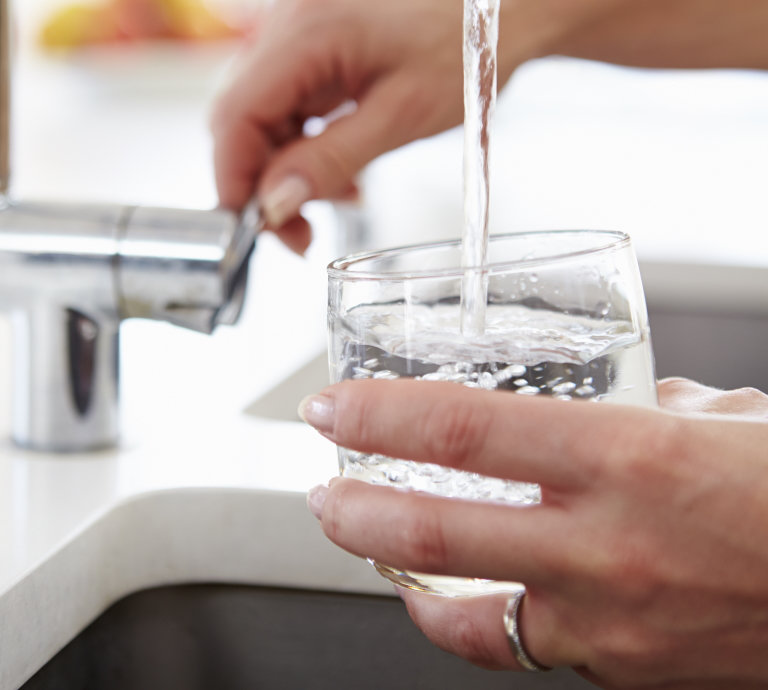Frequently Asked Questions
Frequently Asked Questions
We want to address any questions or concerns you have about water treatment or services. See our FAQs below for quick answers to common questions or contact us for further information.
Water Treatment FAQ
Taste, Health, Environmental and Long
Term Cost Savings.
Hard (mineral) water is beneficial to humans, plants, and animals. However it is harmful to plumbing and appliances because excessive hardness minerals can cause scale build-up, eventually blocking pipes and affecting the performance of appliances like dishwashers and water heaters.
The specific minerals which turn the water hard are calcium and magnesium. When the quantity of these minerals exceeds some level, your water will be converted into hard water. You could easily know if there is hardness in the water, and that is if you find white spots or patches on glassware and utensils, or find your clothes fading its colors easily. These are the quick signs of knowing if the water is hard.
To completely remove hard water, minerals, magnesium, calcium, and chlorine coming into your home, or business you need to install a water softener. This will filter your water so the minerals are removed before it gets to your showers, ice maker, faucets, dishwasher, washing machine and/or other industrial and commercial equipment. A water softener will make it so the water does not leave hard water spots or calcium build anymore. It will leave your skin soft after a shower too!
A typical sign of iron tainted water is the reddish or brownish staining found in your toilet bowl or on the rim of your sink basin. Iron can occur in what is called a “ferrous” state. When you pull the water from the tap, it appears clear. However, once it touches air, it can become oxidized (or ferric). This causes the water to turn reddish or brownish due to rust forming in the water. To counter this reaction, an iron filter can be used to filter out the iron particles.
- Iron Filters offer better tasting water with no iron impurities or metallic taste.
- Clear water with no red or brown hue.
- Safer drinking water with no chemical filtering process
- No more stains on your toilet bowls, sink basins, laundry machines.
- Preserves you softening system by preventing unwanted iron buildup.
The impurities in your water have a certain size, measured in microns. Most household filters may not be able to remove contaminants of a certain size. Many dissolved contaminants are hard to see, smell or taste. There could also be various toxic chemicals such as arsenic, lead, sulfur, mercury and chromium 6 in your water. Or a number of bacteria and microscopic spores that are invisible to the eye. All of these could cause serious harm to your health.
An RO relies on the Reverse Osmosis technique to separate impurities that have a micron size larger than that of a water molecule, through a filter membrane.
That way, all you get is pure, fresh water in the end. Together with a UV filter, a number of parasites and viruses can also be removed to a great extent.
The reverse osmosis method is an efficient and comprehensive means of eliminating more than 90% of potentially harmful contaminants.
Ultraviolet light exists at the invisible, violet end of the light spectrum. Although we can’t see UV light, we are exposed to a small amount every time we walk out into the sun. Special lamps that emit UV light of a particular wavelength are used to disinfect water. UV rays work by penetrating into bacteria and viruses, destroying their ability to function and reproduce. Simple but effective, these systems can destroy 99.99 per cent of harmful micro-organisms. It is done without adding chemicals or changing your water’s taste or odour.
Studies show that metabolic acidosis is associated with many degenerative diseases, can accelerate aging, and cause weight gain.
Discover how alkaline water helps neutralize damaging acids. Alkaline water is used to maintain a healthy pH Balance and can help with:
- Healthy Part of Weight Loss
- Natural Detoxification
- Powerful Hydration
Wells & Pumps FAQ
Most modern well pumps are located in the well and when replacement is necessary, a mobile crane is used, if possible.
Access to the well with a truck-mounted crane facilitates the replacement of the pump when necessary.
The average life span of a submersible pump is considered to be 10-15 years.
Low pressure / loss of water can be caused by anything from water-saver faucets to a mechanical problem with the pumping system to a well going dry. It is uncommon/unlikely that your well is actually going dry.
The cause of water loss or pressure loss in most cases is a mechanical or electrical problem. In general, ground water supplies in this area are plentiful.





